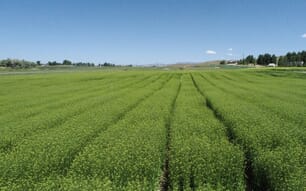Mr Ford said the Department had commissioned the Institute for Marine and Antarctic Studies (IMAS) of the University of Tasmania to undertake a scientific review of the data collected between 2009 and 2012 from the region to determine if nutrient emissions were having adverse impacts in the area.
"The Department implemented an ongoing regulatory monitoring programme covering 15 monitoring stations in 2009 in cooperation with the two salmon farming companies operating in the region, Tassal and Huon Aquaculture Group," Mr Ford said.
"In addition to the monitoring framework, the Department also established limits to nutrient emissions from salmon marine farming operations.
"Although the Department believed the limits and monitoring framework established would minimise impacts on the marine ecology, it was important to assess the monitoring data against the limits and confirm that these measures were effective."
Mr Ford said although salmon marine farming was only one source of nutrient inputs into the marine environment of the Huon and Channel, the Department wanted to ensure that marine farming operations were not having detrimental impacts on the marine environment when their contributions were included.
"The findings demonstrate that the existing regulatory framework for managing industry's nutrient emissions is working effectively," Mr Ford said.
"Assessment of the monitoring data has shown that at current levels of industry production, which are capped, the ecosystem has the capacity to assimilate the inputs from salmon farming activities as well as other human produced sources.”
"The Department will continue to require ongoing monitoring by salmon farming companies in the region and relevant aspects of this program will be refined and updated in light of the outcomes of this IMAS evaluation."
IMAS Director of Fisheries, Aquaculture and Coasts Centre Professor Colin Buxton said the report showed that although there had been a detectable level of change in some nutrient levels that would be associated with the salmon farming industry development, these did not translate into significant or adverse environmental effects to the water quality or sediments.
Professor Buxton said the report was an important measure in further understanding of the state of the marine system in the Channel and Huon estuary area and provided an important baseline for future comparisons
A full copy of the BEMP is available at www.dpipwe.tas.gov.au.




